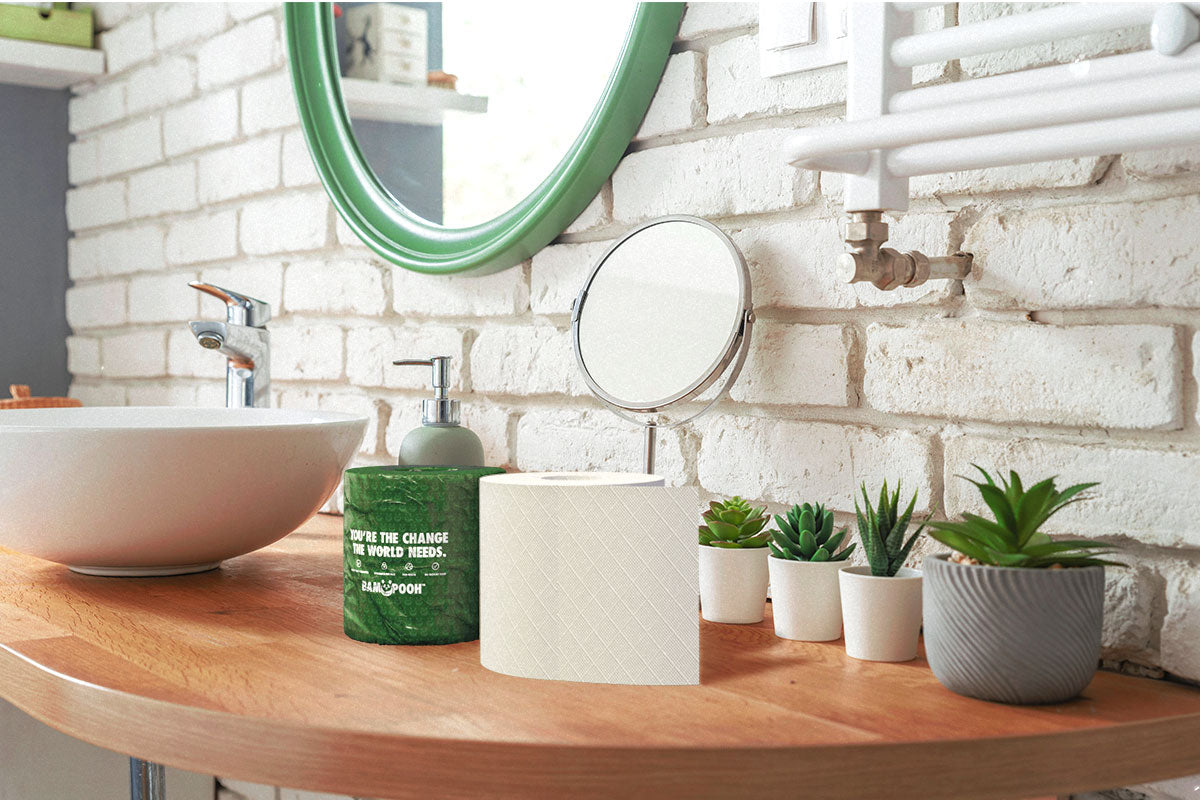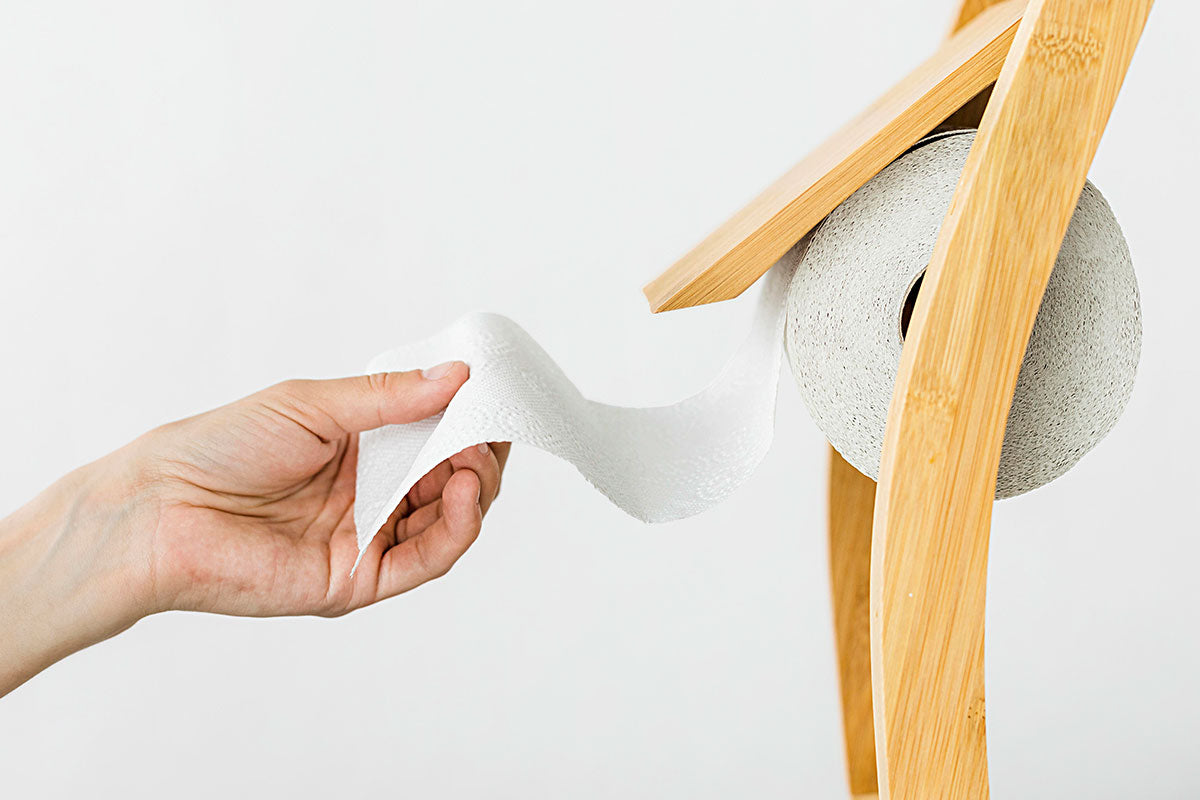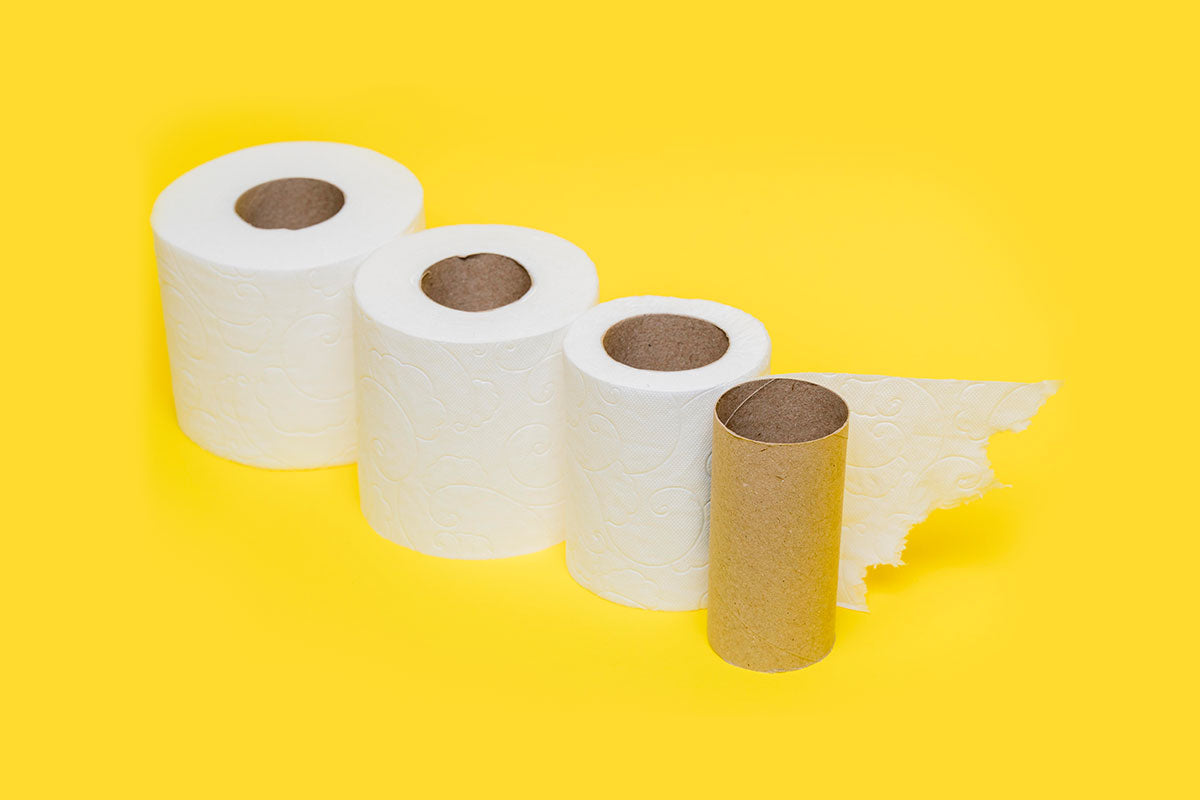Are you interested in creating a more sustainable home and reducing your carbon footprint? Making small changes can have a big impact on the environment. In this blog post, we will give you 7 tips that will help you create a sustainable living space for yourself. We will cover everything from switching to bamboo toilet paper to using energy-efficient appliances. We'll also discuss sustainable flooring options, the role of insulation in a sustainable home, and the importance of air sealing. Lastly, we will talk about how smart thermostats and solar panels can make your home more eco-friendly. Discover simple yet effective ways to make your living space more sustainable!
Switching to Bamboo Toilet Paper
Switching to bamboo toilet paper is an easy way to make your bathroom habits more sustainable. Bampooh’s bamboo toilet paper is a sustainable option that helps reduce deforestation and conserve natural resources. It is also biodegradable and compostable, which means it reduces landfill waste. By making this simple switch, you can reduce your carbon footprint and enjoy the benefits of soft and strong toilet paper that is both comfortable and eco-friendly.
How Switching To Bamboo Toilet Paper Helps The Environment
Switching to bamboo toilet paper offers several environmental benefits. Bamboo is a fast-growing plant that requires less water and energy to grow compared to traditional wood sources. Additionally, bamboo forests absorb more CO2 and produce more oxygen, contributing to reducing the carbon footprint. Bamboo toilet paper is also free from chemicals and bleaching agents, reducing air and water pollution. By making this simple switch, you can play a part in preserving endangered forests and ecosystems.
Energy Efficiency in the Home - The Basics
Home energy efficiency helps reduce overall energy consumption, resulting in lower energy bills and long-term cost savings. Sustainable homes with improved energy efficiency also contribute to climate change mitigation by reducing carbon emissions and decreasing reliance on fossil fuels. Homeowners can implement energy-efficient practices by upgrading appliances to more energy-efficient models, reducing their household energy use. By embracing energy efficiency, individuals can make their homes more sustainable, waste less energy, and positively impact the environment.
Why is Energy Efficiency Important?
Energy efficiency is crucial for a sustainable home. It reduces electricity demand, conserves resources, and decreases dependence on non-renewable energy sources. Energy-efficient homes also have better air quality and lower pollution levels. Using energy-efficient window treatments and minimizing heat loss can contribute to a greener future with fewer greenhouse gas emissions.
How Can You Improve Energy Efficiency?
To improve energy efficiency, consider installing solar panels to harness clean and renewable energy. Opt for double glazing windows to enhance insulation and reduce energy loss. Choose energy-efficient appliances with high ENERGY STAR ratings and use smart home technology to optimize energy usage. Implement energy-saving habits like turning off lights when not in use and reducing standby power.
Sustainable Flooring Options
Sustainable flooring options contribute to a more eco-friendly and sustainable home. By utilizing renewable materials and eco-friendly manufacturing processes, these flooring options help reduce the demand for non-renewable resources. Additionally, they have lower volatile organic compound (VOC) emissions, improving indoor air quality. Many sustainable flooring materials can also be recycled or reused at the end of their life cycle, minimizing waste. Furthermore, their durability and long-lasting nature reduce the need for frequent replacements.
What Makes a Flooring Option Sustainable?
Sustainable flooring options are eco-friendly choices that prioritize responsible sourcing and ethical production practices. Materials like cork, bamboo, and reclaimed wood are commonly used. These flooring options have minimal impact on the environment throughout their life cycle and require fewer chemical cleaners. Choosing local or regional options also reduces transportation carbon footprint.
Top Picks for Sustainable Flooring
When it comes to sustainable flooring options, there are several top picks to consider. One option is cork flooring, which is harvested without harming the tree. Bamboo flooring is another eco-friendly choice, as it is highly renewable and grows quickly. Reclaimed wood flooring repurposes old wood from demolished buildings, reducing waste. Linoleum flooring, made from natural materials like linseed oil and jute fibers, is also a sustainable option. Additionally, recycled glass tile flooring utilizes post-consumer glass, reducing the need for new resources. Incorporating these flooring choices into your home can help create a more sustainable living space.
The Role of Insulation in a Sustainable Home
Proper insulation plays a vital role in creating a sustainable home. Insulation improves energy efficiency by reducing heat loss or gain and reducing the need for artificial heating and cooling. This not only saves energy but also lowers carbon emissions by minimizing the reliance on fossil fuels. In addition, adequate insulation enhances overall comfort by providing better soundproofing. So, when it comes to creating a more sustainable home, insulation is an essential element to consider.
Different Types of Insulation and Their Benefits
When it comes to insulating your home for sustainability, there are several different types of insulation that you can choose from, each with its own unique benefits. Spray foam insulation is known for its excellent air sealing and thermal resistance properties. Fiberglass insulation, on the other hand, is affordable, easy to install, and provides good thermal performance. If you're looking for effective soundproofing, cellulose insulation made from recycled paper is a great option. Reflective insulation reduces radiant heat transfer and improves energy efficiency. And for those who prioritize renewable and environmentally friendly options, natural insulation materials like sheep's wool or cotton are ideal choices. By understanding the different types of insulation available, homeowners can make informed decisions that lead to a more sustainable home.
The Importance of Air Sealing
Insulating your home and sealing air leaks are essential for improving energy efficiency and reducing your carbon footprint. Proper air sealing helps lower utility bills and decrease energy consumption by preventing heated or cooled air from escaping. Additionally, it plays a crucial role in enhancing indoor air quality by keeping pollutants and allergens out. Minimizing heat loss through air leaks can also decrease your reliance on fossil fuels. Take the necessary steps to seal air leaks and create a more sustainable home.
Air Sealing Techniques for Maximum Sustainability
To make your home more sustainable, it's important to implement air sealing techniques that minimize air leakage and improve energy efficiency. Start by using weatherstripping to seal gaps around windows and doors, preventing drafts and reducing energy waste. Apply caulk to seal cracks and gaps in walls and foundations, preventing air infiltration. Install door sweeps and thresholds to seal gaps at the bottom of doors, further preventing air leakage. Additionally, insulate attics, walls, and crawl spaces to reduce air leakage, and seal ductwork to improve HVAC system efficiency. By implementing these techniques, you can create a more sustainable and energy-efficient home.
How Can Smart Thermostats Contribute to Sustainability?
Smart thermostats play a crucial role in promoting sustainability. By optimizing energy usage based on occupancy, they reduce energy consumption. You can schedule temperature settings to minimize energy use during unoccupied periods and control your HVAC system remotely. Additionally, smart thermostats provide energy usage reports and recommendations, helping you make informed choices for a more sustainable home.
Best Smart Thermostats for a Sustainable Home
When it comes to making your home more sustainable, investing in a smart thermostat is a wise choice. The ecobee SmartThermostat provides energy-saving features and room sensors, ensuring optimal comfort while reducing energy consumption. The Nest Learning Thermostat learns your preferences over time and adjusts temperatures accordingly, maximizing efficiency. The Honeywell Home T9 Smart Thermostat offers zoned temperature control, allowing you to heat or cool specific areas of your home as needed. The Sensi Touch Wi-Fi Thermostat boasts easy installation and energy-saving capabilities. Lastly, the Emerson Sensi Smart Thermostat can be conveniently controlled through voice commands. These smart thermostats exemplify the importance of incorporating technology into our daily lives to create a more sustainable home.
The Power of Solar Panels
Solar panels have the power to generate clean and renewable energy from the sun, reducing our reliance on fossil fuels. By harnessing solar energy, we can lower our carbon emissions and make a positive impact in mitigating climate change. Additionally, installing solar panels can lead to significant savings on electricity bills, as we generate our own renewable energy. Government incentives and tax credits further incentivize homeowners to embrace solar power, increasing the value of their homes and attracting eco-conscious buyers.
Benefits of Installing Solar Panels at Home
Installing solar panels at home offers numerous benefits for homeowners. By harnessing the abundant and free energy from the sun, you can power your home in a more sustainable way. It also reduces your dependence on the electrical grid, protecting you against rising energy costs. Additionally, installing solar panels contributes to a more sustainable future by decreasing reliance on non-renewable resources. You can enjoy long-term savings and potential earnings through net metering and excess energy production. Furthermore, solar panels increase the resilience of your home during power outages with battery storage options.
Conclusion
In conclusion, sustainable home living is not only beneficial for the environment but also for your own well-being. By making small changes like switching to bamboo toilet paper, improving energy efficiency, choosing sustainable flooring options, insulating your home, air sealing, using smart thermostats, and installing solar panels, you can significantly reduce your carbon footprint and contribute to a greener future. Remember, every action counts, and together, we can make a big difference. So, start implementing these tips today and create a more sustainable and eco-friendly home for yourself and future generations to come. Let's work towards a better tomorrow!









